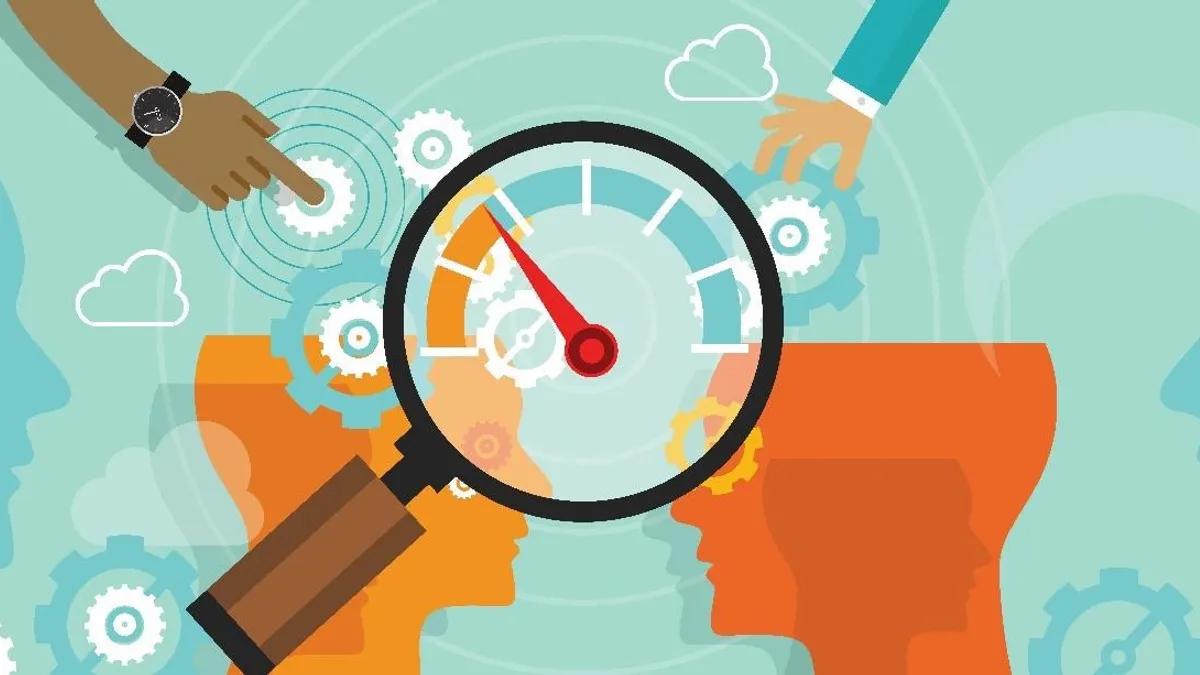If you have ever conducted an online search to figure out what adaptive learning is, you probably came across numerous articles with vastly different definitions of it and ended up more confused than when you began. What might be more puzzling is that all of them may be correct. Why? Because companies apply adaptive learning differently based on their goals and resources.
On one end of the spectrum, a company might use adaptive learning that is bolstered with artificially intelligent (AI) algorithms. Think about an interactive online course with question checkpoints throughout. Based on how your employee responds, the course uses machine learning to adapt—in real time—to focus on areas the employee needs to improve.
On the other end of the spectrum, a company might use adaptive learning in a less high-tech way. Think about an employee who takes a skills assessment. Based on the results, you decide to adjust the employee’s training plan so it addresses a specific knowledge gap and lessens the focus on an area in which they showed a high proficiency.
No matter where your company falls on the spectrum of adaptive learning, we can all agree that an L&D approach that is tailored to employees to optimize their performance is far better than one-size-fits-all training. After all, why would you want your employees to spend valuable time “off the floor” learning something they may already know?
But what if you are further along in your adaptive learning journey? Not only do you understand it in the context of its benefits, but you have created a thoughtful strategy that is aligned with your company’s business goals, you’ve gained the necessary buy-in from the powers that be, and you’ve successfully implemented adaptive learning at your company. What next?
Moving forward in adaptive learning: Proving its effectiveness
As you know, designing an effective adaptive learning program requires your team to understand the results that matter and use that information to deliver relevant, personalized experiences. This is a great precursor and important first step that not many companies have achieved, which is why AI is still only effective in certain pockets of an L&D program. Of course, the next step is to determine if your adaptive learning program is working—primarily, by way of improved employee performance, customer satisfaction, and business outcomes. The good news is that all these areas are tied to the skills and competencies you seek to improve through adaptive learning, and, therefore, can be measured.
If adaptive learning is built around skills and competencies as the underlying mechanism for adaptation, then you can measure its success by continuously assessing the alignment and mastery between your employees’ competencies and their individual skills.
Courses, learning content, exam questions, on-the-job tasks, and other elements are connected to skills and allow your learning technology system to dynamically adapt to the different skill levels as someone progresses through their development journey.
There are a few ways that adaptive learning can come to life. At some companies, it’s largely based on skills; however, you can also leverage pre-qualification exams to help users “test out” of sections of content within a course, allowing for additional adaptive behavior.
From there, then you can leverage the results of the assessments to understand trends and performance improvements overall. Taking it to the next level, you can correlate business impact closely against your specific KPIs to understand the impact on performance relative to your company’s business objectives and metrics.
Tips to measure the impact of adaptive learning on staff performance
Build a bank of skills and competencies—in your performance management programs or systems that you can organize into categories for fast reference, reporting and management.
Align skills and roles with your learning objectives—so you can determine where you have coverage and where you have gaps. Ideally, this is so you can eventually “chunk out” your course content into adaptive components.
Use skills assessments—to measure your employees’ skills and job performance. You can also schedule periodic mandatory assessments that managers conduct for their teams and track the completion rate.
Use ranking tools—to identify your top performers by skill or role; for example, to find the best sales reps in a specific region or for a specific product.
Identify skill gaps—and adjust your training plan based on a targeted skill strength for any job and track the results.
Plan for succession—by finding candidates with the least skills gap for any role or by finding the best candidates by region and role, based on their ranking.
Tips to measure the impact of adaptive learning on business performance
Define and track your KPIs—including revenue summaries, customer satisfaction averages, and so on.
Use dashboards—to measure the ties between training and business performance across departments and to explore how long it takes after training for you to see the impact of expected results in those areas
Include seasonal trends in your KPIs—to get more objective results between training and business goals and to distinguish between ongoing training and seasonal training initiatives and how it impacts your business as you change.
Compare business performance—between teams or store-to-store to correlate your various KPIs and explore the impact of a single business area, for example, to see if customer satisfaction impacts customer upselling.
Track the collective knowledge of your organization and staff—and measure it by training topic, course, or curriculum to see how the collective knowledge of your company impacts your KPIs.
As the saying goes: measure twice, cut once. In order to modernize your L&D efforts with an effective adaptive learning strategy, your key focus must be on getting the right parameters in place from the very beginning and ensuring they are carried throughout the process.










